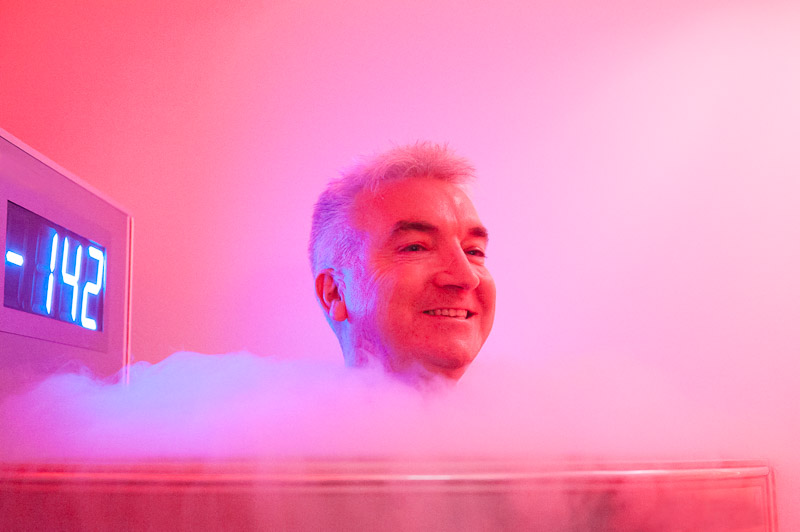If you’re just getting serious about a training routine, or looking to step your athletic performance up a level, you might be sneaking a look at other athlete’s recovery methods. Should you be taking a cold plunge, or can cryo treatment be more beneficial?
Submerging all or part of the body in a 12 to 15 degrees Celsius ice water bath following training or competition is quite a common practice. The big question is, should you be joining in?
It can’t possibly feel great, and it is a lengthy process. If you are not part of an elite sporting club, getting your hands on enough ice and a place to put it might be tricky, or at least a hassle. You want to know if it’s going to be worth it. Is it really the best way to speed up recovery or reduce muscle pain and soreness after a work out?
Cryotherapy Benefits
The following points will break down the benefits Cryotherapy may provide against ice bath treatment to see which comes out on top.
Both of these treatments involve reducing core temperature and both look to achieve the same health benefits. What both these submersion treatments can offer is muscle repair. In order for muscles to grow, they need to be damaged, through the healing of tiny tears (micro traumas) in the muscle fibres the muscle gains mass, density and strength.
A downside to natural muscle repair is delayed onset muscle soreness (DOMS), which is the pain and stiffness you feel 1-2 days after a workout.
By constricting the blood vessels through exposure to cold, Cryotherapy can benefit recovery by increasing the rate of muscle repair as well as alleviating DOMS. The cold exposure can encourage blood to concentrate around internal organs, meaning that muscles and muscle tissue can be relieved of swelling and inflammation as well as flushing toxins and waste, such as lactic acid, from surface tissue.
As the body is warmed to room temperature, an increase of blood flow can speed circulation, delivering new, high octane blood to the skin, muscles and tissues which may bring rapid repair and healing.
While both treatments can have the same benefits, there are differences between the levels of effectiveness and comfort.
1. Cryotherapy is Dry
Whole Body Cryotherapy treatment is completely dry. Your skin reacts and your body goes to work without absorbing or retaining any external fluid. There is no contact with moisture and no absorption. Unlike an ice bath that can waterlog the skin, cause redness, irritation, damage, sensitivity or even stabbing or burning pain, the liquid nitrogen mist and refrigerated air can actually stimulate skin cells and nourish the skin, leaving it healthy and revitalised.
2. Cryotherapy is Fast
The time spent in a Cryotherapy Chamber is carefully calculated by a professional technician. The temperature is exact, and the time is exact, never exceeding three minutes, to ensure the effects and body’s systems are in peak condition at all times.
There is a lot of debate about how long an ice bath should go for. Some say no longer than 8-10 minutes, other say up to 20 minutes. Not only are the guidelines loose, every bath and every body will be different, depending on the setting (outdoors or in) the level of submersion (lower legs, whole leg, chest), the actual temperature (although this will flux with body heat and time passing) and what the bath itself is comprised of – enamel, plastic, tin. You also need to factor in warm up time as well, which again, will vary for every person. You will need to spend some time experimenting within your personal comfort zone to find the most effective temperature and exposure time.
Adding stress at this point may cause more muscle stiffness and pain the next day, so a measured dose of time and an understanding of the impact is essential. Not only is three minutes significantly faster it’s also can be painless. In that three minutes, you can also ensure complete coverage.
An ice bath trumps an icepack because it covers a larger area, which can effect and relieve a bigger network of muscles. Therefore Whole Body Cryotherapy can be even more effective and able to expose the entire body for the correct measure of time.
3. Cryotherapy is Safe
An ice bath is almost impossible to control as there is no way to judge what the exact temperature is, and what the right temperature for your body mass and exercise routine should be, Without having ways to monitor the effect the endured cold is having on your inner system, what your body’s responses are or if you are inflicting damage through persistent cold on one area, you could be over exposing yourself and putting your body in a dangerous situation. As the cold has penetrated the skin, it is not a simple warm up process, and can take the body a long time to reheat. Cold can tense and stiffen muscles so you may also need to be sure you dry off correctly and completely and fully warm up about 30 to 60 minutes later to avoid any risks.
With Whole Body Cryotherapy, a trained Cryo therapist is present the whole time, monitoring oxygen, temperature, and the responses within your body.
Gloves and slippers are provided to protect exposure to fingers and toes. You also get to keep your dignity with a robe, shorts, crop tops or singlets as desired.
If it’s time you looked after your body, in a controlled environment, book your first Cryo whole body cryotherapy sessions online today at www.cryo.com.au.

